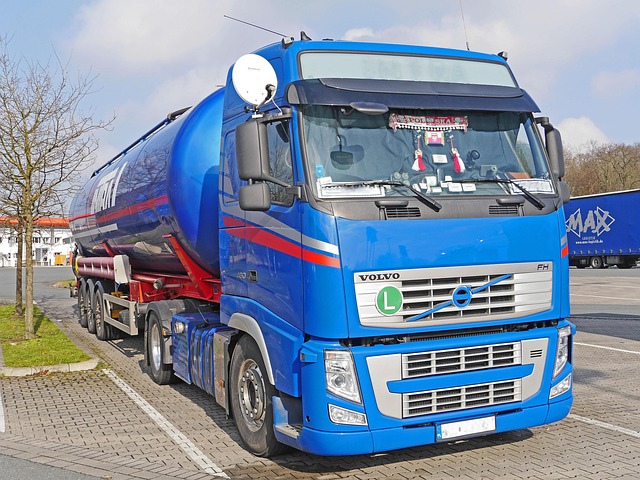Smoke tests and OBD (On-Board Diagnostics) scans are essential for maintaining trucks' engines and ensuring safe operation. Smoke tests identify issues like misfires and leaks through controlled smoke analysis, while OBD scans provide real-time data on engine health and emissions. Combining these methods allows for thorough truck diagnostics, addressing from mechanical to electronic problems, ultimately optimizing performance and safety for commercial fleets.
In the world of truck maintenance, diagnosing issues efficiently is key. Two prevalent testing methods are smoke tests and OBD (On-Board Diagnostics) scans, each with unique advantages. Smoke tests, a traditional method, visually inspects for exhaust leaks, ideal for identifying problems in engines. OBD scans, a modern approach, uses advanced technology to retrieve data from a truck’s computer, offering precise diagnostics. Understanding these methods is crucial for truckers to ensure optimal vehicle performance and safety on the road.
- Understanding Smoke Tests for Trucks
- OBD Scans: A Modern Approach
- Advantages of Each Testing Method
- Common Issues Found Through Tests
- Choosing the Right Test for Truckers
Understanding Smoke Tests for Trucks

Smoke tests for trucks are a crucial diagnostic tool in the world of vehicular maintenance, particularly for diagnosing issues with a truck’s engine. This non-invasive method involves introducing a controlled amount of smoke into the engine compartment to observe any visible signs of excessive exhaust gas. By examining the color and density of the smoke, technicians can gain valuable insights into the engine’s performance and identify potential problems.
For trucks, smoke tests are often used to check for issues like misfires, incomplete combustion, or leaks in the exhaust system. They provide a quick way to assess the overall health of the engine, especially when combined with other diagnostic tools. This simple yet effective method helps ensure that trucks are running efficiently and safely on the road, addressing potential issues before they become more serious problems.
OBD Scans: A Modern Approach

OBD scans represent a modern approach to diagnosing issues in vehicles, including trucks. With the evolution of technology, On-Board Diagnostics (OBD) systems have become increasingly sophisticated, offering mechanics and owners a powerful tool for identifying problems efficiently. These advanced systems allow for quick and accurate reads of a truck’s performance metrics, providing valuable insights into engine health, emissions, and other critical functions.
Compared to traditional smoke tests, OBD scans offer several advantages. They are non-invasive, environmentally friendly, and provide real-time data, making them a preferred method for modern vehicle maintenance. Moreover, OBD systems can detect a wide range of issues, from minor problems like loose connections to more severe ones such as engine failures, ensuring that trucks remain safe and efficient on the road.
Advantages of Each Testing Method

Smoke tests for trucks offer several advantages, particularly in terms of accessibility and cost-effectiveness. This method, which involves checking visible smoke emissions from the exhaust, is quick and easy to perform, requiring minimal specialized equipment. It’s an excellent way to identify issues with fuel injection systems, ignition problems, or blockages in engine components, making it a go-to for routine maintenance and troubleshooting.
On the other hand, OBD (On-Board Diagnostics) tests provide a more comprehensive analysis of a truck’s performance and emissions. Using advanced sensors and software, these tests can detect subtle issues with various systems, including engines, transmissions, and even tire pressure. While they might require more specialized tools, OBD tests offer precise data insights, making them invaluable for diagnostic accuracy and compliance with environmental regulations, especially for commercial fleets of trucks.
Common Issues Found Through Tests

Through smoke tests and OBD (On-Board Diagnostics) testing, a wide range of common issues can be uncovered in vehicles, including trucks. Smoke tests, which observe engine emissions under load, are particularly effective at revealing problems like faulty fuel injectors, leaks in the cooling system, or issues with the ignition system. These tests provide tangible clues through visible smoke and emissions readings.
OBD testing, on the other hand, leverages advanced diagnostics to detect a broader spectrum of problems within a truck’s computer systems. This includes codes for engine misfires, faulty sensors (like oxygen sensors), and even problems with the vehicle’s anti-lock braking system (ABS) or airbag deployment mechanisms. By combining these two approaches, technicians gain comprehensive insights into the health of a truck, ensuring optimal performance and safety.
Choosing the Right Test for Truckers

Choosing the right diagnostic test for your truck is crucial, especially when it comes to identifying issues efficiently and effectively. For routine checks or maintenance purposes, an OBD (On-Board Diagnostics) scan tool is a game-changer. These tools connect directly to a truck’s diagnostic port and provide real-time data on various systems, allowing mechanics to quickly identify problems with the engine, transmission, or other components.
When dealing with more complex or mysterious issues, however, a smoke test (or exhaust analysis) becomes invaluable. This method involves monitoring the exhaust gases for unusual levels of pollutants, which can pinpoint specific parts or systems that may be malfunctioning. While OBD tools offer convenience and speed, smoke tests provide deeper insights into a truck’s overall health, making them essential for troubleshooting stubborn problems in trucks.
In the world of truck maintenance, choosing the right diagnostic testing method is crucial. Both smoke tests and OBD (On-Board Diagnostics) scans offer valuable insights into a truck’s performance. Smoke tests are traditional, cost-effective, and excellent for identifying engine issues, while OBD technology provides a modern, comprehensive view, detecting even subtle problems through advanced diagnostics. Understanding these methods’ advantages allows truckers to make informed decisions, ensuring their vehicles run optimally and safely on the road. Whether relying on classic smoke tests or embracing OBD technology, regular testing is key to maintaining trucks in top condition.
